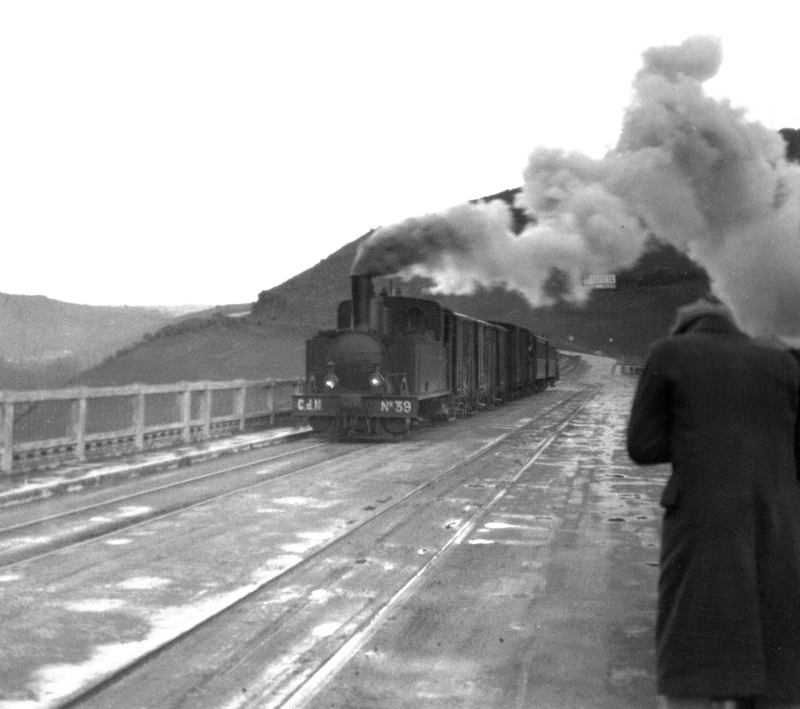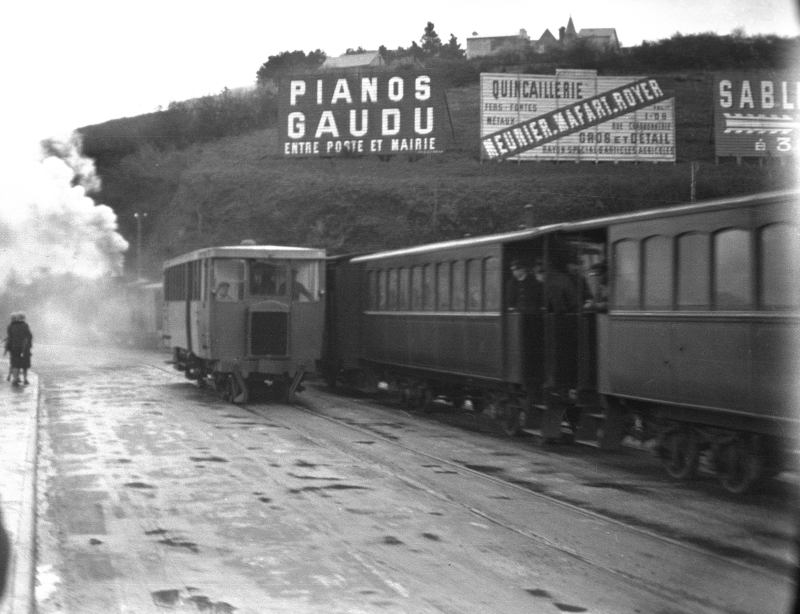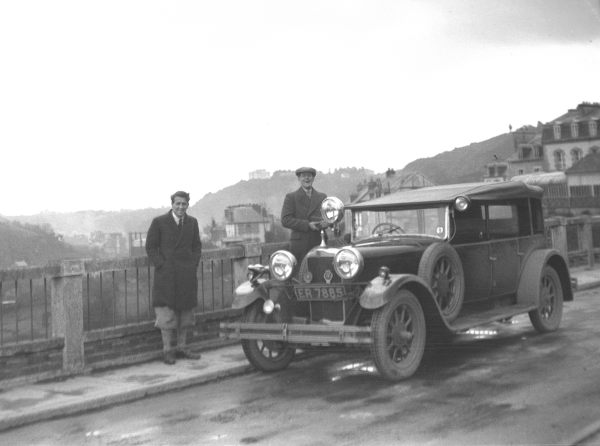However, the world has now moved on, and the digital darkroom is a reality. I purchased (at Costco) an Epson Perfection 2400 Photo scanner -- which includes a 35mm transparency adapter. Of course, the negatives that I have are not 35mm, but an assortment of sizes. If someone could identify them (and the type of camera that used them), I'd be interested.
| Size of Image | Size of Film |
| 56mm×56mm | 60mm×60mm |
| 56mm×40mm | 68mm×44mm |
| 80mm×56mm | 88mm×63mm |
It turns out that when scanning with the 2400, the software does not allow you to see quite the full size of the transparency adapter, so some of the larger negatives have bits cut off.
It is a real challenge to get a clean scan -- there is a lot of dust around, and the negatives themselves have many scratches and other problems.
The first few that I have done any work on are shown below.
 This
is a Corpet-Louvet # 39 on the Souzain viaduct. Of course, the original
negative had no information, but the Internet being what it is, a quick search
on Google brought me to the page of the association that knows about
the CdN railway (which is in French). My schoolboy french leaves a lot
to be desired, so a quick use of the translate feature, leads to the home
page for the ACFCdN.
This
is a Corpet-Louvet # 39 on the Souzain viaduct. Of course, the original
negative had no information, but the Internet being what it is, a quick search
on Google brought me to the page of the association that knows about
the CdN railway (which is in French). My schoolboy french leaves a lot
to be desired, so a quick use of the translate feature, leads to the home
page for the ACFCdN.
They identified the engine type (Corpet-Louvet) and the location
almost instantly. The viaduct was built in 1905 and has since been
demolished (in 1995).
It turns out that CdN #36 still exists in running order, see this picture,
or this set.
A very large version of this
image is available. If anybody knows how to remove the horizontal
scratches, I would be interested. The standard dust removal tool doesn't
work as the scratches are too faint, but they are visible as there is a
lot of horizontal correlation.
 Further
searching through the negatives, and I found this one. The steam engine
is hardly visible through the clouds of steam (smoke?) but is another
Corpet-Louvet engine. The other vehicle is a De Dion Bouton KG rail
car. Apparently, the CdN ordered three of these in 1926 and put them in
service in 1928 -- so this photograph must be after that date.
Further
searching through the negatives, and I found this one. The steam engine
is hardly visible through the clouds of steam (smoke?) but is another
Corpet-Louvet engine. The other vehicle is a De Dion Bouton KG rail
car. Apparently, the CdN ordered three of these in 1926 and put them in
service in 1928 -- so this photograph must be after that date.
A quick google for pianos gaudu shows a rare book that mentions this piano store in Saint-Brieuc. Happily, this is also mentioned on the ACFCdN web page.
A quick search for mafart quincaillerie shows that they are still a hardware store in Saint-Brieuc. Their website shows a thoroughly modern set of buildings. They are now a large hardware distribution company.
A very large version of
this image is available.
 The
viaduct was built by Harel de la Noë for the CdN and also
carried car traffic and people on foot. This was the largest viaduct
constructed for the CdN. This image shows (I assume) the car that my
father was travelling in. The track is visible in the bottom right hand
corner.
The
viaduct was built by Harel de la Noë for the CdN and also
carried car traffic and people on foot. This was the largest viaduct
constructed for the CdN. This image shows (I assume) the car that my
father was travelling in. The track is visible in the bottom right hand
corner. It is not clear how my grandchildren will be able to extract the
pictures that I am taking today. One solution is to print them onto
photographic paper (using your local digital minilab) and keep them
somewhere safe. The print outs from most color printers today fades very
rapidly unless the image is stored properly. Check out the Wilhelm Imaging Research
web site for more than you want to know about this issue!